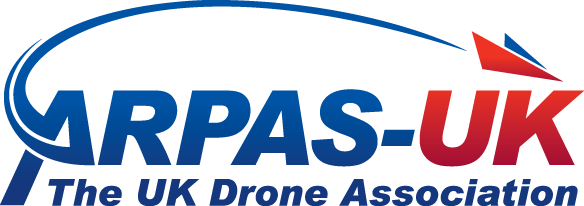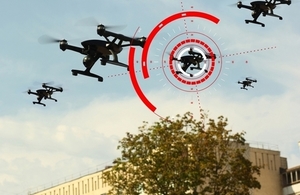Drones (also known as unmanned aircraft) are flying systems that do not carry a pilot. As the technology has become cheaper and more sophisticated, the use of drones for recreational and commercial purposes has grown, with the Civil Aviation Authority (CAA) reporting a significant increase in the number of permissions obtained for operating commercial drones in the UK. Despite their potential to reduce costs, improve efficiency and provide new services, drones may be misused accidentally or for malicious purposes. For example, reports of drone sightings at Gatwick Airport in December 2018 grounded around 1,000 flights for almost 36 hours, affecting more than 140,000 passengers. In 2018, the Government introduced new limits on where drones can be flown and new registration and education requirements for drone operators and pilots. In January 2020, the new Government introduced an Air Traffic Management and Unmanned Aircraft Bill to Parliament that included new police powers for enforcing aviation laws (such as the power to issue a fixed penalty notice for certain drone offences). This POSTnote looks at civilian drones and their applications, focusing on potential misuse and possible responses.

Drones can be particularly useful in remote, inaccessible or dangerous settings. Some of the current applications of drones include: photography and filming for research, inspecting infrastructure for wear and damage, and emergency response, including to aid search and rescue and provide surveillance of a disaster area. While they have many benefits, the speed, low cost and increasing flight range and capacity to carry items can also make them attractive to people who may use them maliciously, recklessly, negligently or with criminal intent. Examples of their misuse include causing disruption to other aircraft, intrusion of privacy through filming people without permission, facilitating physical or cyber-attacks, and enabling other criminal activity (such as flying contraband into prisons).
Key points:
- Drone use is growing, with one projection suggesting that more than 76,000 drones, operated by government and commercial organisations, may be in use in the UK by 2030.
- Greater drone use affords many potential social and economic benefits. For example, they are being used for environmental monitoring and to support search and rescue teams.
- Despite this, drones may be misused accidently or deliberately, presenting new challenges for safety and security.
- There are a variety of technological ways of addressing drone misuse. They include those built into drones, and those that can detect, track, seize, disable or destroy drones posing a threat.
- Detecting a drone’s presence, and tracking its location, can be difficult, but some of the techniques used for drone surveillance include radiofrequency, radar, video and acoustic technologies.
- Drones may be equipped with built-in geofencing software, creating virtual boundaries limiting where they can fly.
- There are also techniques that can be used to disable a drone in flight. These include physical methods such as projectiles, guns that fire a net and birds of prey trained to seize small drones from the air.
- Non-physical methods to disable a drone include radiofrequency jamming, which can disrupt the communications link between a drone and its pilot.
- Civilian drones must comply with existing civil aviation legislation. In the UK, this is primarily the Civil Aviation Act 1982 and the Air Navigation Order 2016 (ANO).
- The ANO was updated in 2018 to introduce new restrictions for drones, including prohibiting small drones (up to 20 kg) from flying over 400 feet, or within 1 km of airport boundaries, and requiring operators of drones weighing 250 g or more to register with the CAA,and pilots to pass an online competency test.
- The ANO was updated again in 2019, extending the flight restriction zone at protected aerodromes (including airports and airfields). This amendment increased the flight restriction zone around aerodrome boundaries from 1 km to 4-5 km.
- The widespread commercial adoption of drones would require developments in technology and the legislation governing their use.
- Widespread drone use may also raise other challenges in the future, such as contributing to noise pollution,which could become an issue if drone operations (such as delivery) become routine in urban areas.
Acknowledgements
POSTnotes are based on literature reviews and interviews with a range of stakeholders and are externally peer reviewed. POST would like to thank interviewees and peer reviewers for kindly giving up their time during the preparation of this briefing, including:
- All Party Parliamentary Group on Drones
- Andre Burgess, National Physics Laboratory
- Andrew Chadwick, Royal Aeronautical Society*
- ARPAS UK*
- Carla Washbourne, University College London
- Christian Struwe, DJI*
- Civil Aviation Authority*
- David Guerin, Gatco*
- David Phipps, British Model Flying Association
- Department for Business, Energy & Industrial Strategy*
- Department for Transport*
- Dr Anna Jackman, Royal Holloway, University of London*
- Dr Mirko Kovac, Imperial College London
- Dr Monica Rivas Casado, Cranfield University
- Dr Paul Cureton, Lancaster University*
- Dr Stephen Prior, University of Southampton*
- Dr Stuart Dunning, Newcastle University
- Home Office*
- Jim Cranswick, NATS
- Jonathan Keating, Government Office for Science
- Karim Cosslett, Thales*
- Kathy Nothstine, Nesta
- Kerry Blakeman, Droneheights (formerly West Midlands Police)*
- Mark Callaghan, Sussex Police
- Mark Lever, Gatwick Airport*
- Members of the POST board*
- Ministry of Defence
- Professor David Dunn, University of Birmingham*
- Professor James Scanlan, University of Southampton*
- Richard Toomer, BALPA*
- Ricky Bhargava, Nesta*
- Roger Gardner, University of Southampton
- Tom Self, Wright Acoustics*
*denotes people and organisations who acted as external reviewers of the briefing.
Image copyright: Adonyi Gabor
POSTnotes POST-PN-0610
Authors: Lydia Harriss; Zara Mir
Topics: Ambulance services, Aviation, Crime, Emergencies and disaster management, Emergency services, Fire services, Health services, Industry, Information technology, Intelligence services, Leisure, Police, Prisons, Privacy, Regulation, Security industry, Terrorism
Download the full report
Misuse of civilian drones ( ![]() PDF, 355.28 KB)
PDF, 355.28 KB)





